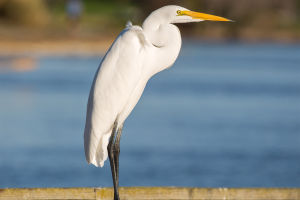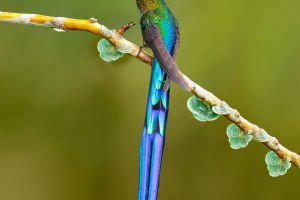The Ural Owl is a species of owl widely distributed in the forests of northern Eurasia, known for its pale face and soft gray-brown plumage.
They get their name from the Ural Mountains, where one of the first places the bird was observed.
The Ural Owl is a large owl, usually between 50 and 60 cm in size, with a wingspan of up to 125 cm. The feather pattern of this owl shows horizontal stripes and spots, which helps them hide among trees and avoid being discovered by natural enemies.
The habitat of the Ural Owl is mainly mixed forests and coniferous forests. They like to move around in sparse forest edges or near wetlands.
This owl usually chooses to nest in the hollows of tall trees, and sometimes they occupy the old nests of other birds such as eagles or crows to take advantage of these ready-made habitats. This picky choice of nest location allows them to hide from potential predators and provide better protection for their young birds.
The Ural Owl is a nocturnal bird, active primarily at night, although in some more northern areas, it will hunt during the day. Its diet includes small mammals, birds, and insects, with small mammals such as voles and mice making up the majority of its prey.
The owl locates its prey through silent gliding and precise hearing, which is its most important sensory tool when hunting. The Ural Owl's ears are arranged asymmetrically, allowing them to more accurately locate the source of sounds, which gives them unparalleled hunting capabilities.
Although they look elegant and mysterious, Ural Owls can become extremely aggressive when threatened, especially when protecting their nests and young. They are ruthless to potential threats and often actively attack predators that approach their nests, including larger animals and even humans.
Many researchers and bird watchers have reported being attacked by these birds when approaching Ural Owl nests, resulting in scratches and minor injuries. Therefore, it is generally necessary to be cautious when entering their territory.
The breeding season for Ural owls usually begins in early spring, when the female lays two to four eggs. After an incubation period of about a month, the chicks spend their first few weeks in the nest.
During this time, the female is responsible for caring for and feeding the chicks, while the male is responsible for hunting and ensuring food supply for the family. The chicks gradually begin to learn to fly in about two months, although they still need their parents to continue to provide food and protection.
The call of the Ural owl is low and long, often described as a "woooo" sound with an echoing effect. This call can be heard far away in the forest at night, enhancing their presence in the territory. Unlike some other owls, the call of the Ural owl is recognizable and rarely confused.
Although the Ural owl population remains stable worldwide, its number is declining in some areas due to habitat loss. Deforestation and human activities pose a threat to this bird, especially those Ural owls that rely on old tree holes for nesting, which often have difficulty finding suitable habitats.
To protect this bird, many countries have begun taking steps to protect its habitat, limit deforestation, and provide artificial nesting boxes to help them find suitable breeding grounds.
A symbol of wisdom and mystery, the Ural Owl plays an important role in nature, helping to control rodent populations and maintain ecological balance.
For those who are lucky enough to see this bird in the wild, the sight of the Ural Owl is always unforgettable. Their calm, majestic, and solitary temperament make them hermits in the forest, quietly guarding their territory.


